
The 5th International Symposium on Primatology and Wildlife Science

Thank you for joining and helping the symposium.
March 3-6, 2016
INUYAMA INTERNATIONAL SIGHTSEEING CENTER (FREUDE)
Address: 4-21, Matsumoto-cho, Inuyama-shi, Aichi犬山国際観光センター“フロイデ”
Tetsuro MATSUZAWA (PWS Program Coordinator)

Chair: Ikuma ADACHI

Cooperation and competition among female bonobos
Takeshi FURUICHI Primate Research Institute, Kyoto University
Mixed species associations of guenons in the Kalinzu Forest and the report of the AA Seminar held in Kalinzu in August 2015
Chie HASHIMOTO Primate Research Institute, Kyoto University
Non‐invasive DNA sampling of wild bonobos: progress report
Shintaro ISHIZUKA Primate Research Institute, Kyoto University
A sex difference of motheroffspring relationships in bonobo patrilineal societies
Kazuya TODA Primate Research Institute, Kyoto University
Mother‐Infant Relationships of Wild Chimpanzees and Environmental Education Program in Kalinzu, Uganda
Natsumi ARUGA Primate Research Institute, Kyoto University
Chair: Naruki MORIMURA


Environmental enrichment for zoo animals : from backyard to exhibition
Yumi YAMANASHI Wildlife Research Center, Kyoto University
The Rock‐Paper‐Scissors Game in Chimpanzees (Pan troglodytes)
Jie GAO Primate Research Institute, Kyoto University
Exploring attentional facilitation and disengagement to assess emotional states in captive chimpanzees: Progress Report
Duncan WILSON Primate Research Institute, Kyoto University
Influence of inter‐individual distance on grooming interaction in captive chimpanzees and bonobos: research progress
Morgane ALLANIC Primate Research Institute, Kyoto University
Chair: Reiko TAKIZAWA




From the World Heritage to Non Protected Area ‐ Recent Challenges on Biodiversity Conservation in Relation to Policy Framework
Naobi OKAYASU WWF Japan / WRC Kyoto University
Wildlife Habitat Fragmentation in the DRC
Raymond S. LUMBUENAMO Wildlife Research Center, Kyoto University
Show Abstract
Poverty Eradication vs Nature Conservation - For the Survival of this Planet
Masahiko HORIE Ambassador for Global Environmental Affairs
Primate Conservation: What we know, what we do not know, and ways forward
Colin CHAPMAN McGill University/Wildlife Conservation Society
Show Abstract
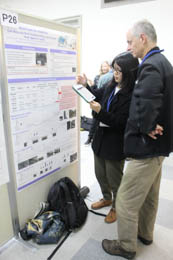









Chair: Fred BERCOVITCH
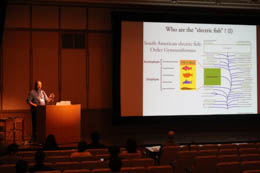


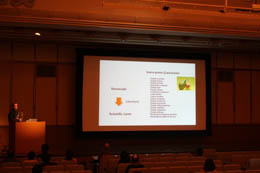

Electric fish as a model organism for behavioral research (and public exhibition).
José Alves GOMES Laboratório de Fisiologia Comportamental e Evolução (LFCE), Instituto Nacional de Pesquisas da Amazônia (INPA)
Show Abstract
Monkey for dinner? Bushmeat, urbanization and food security in the Amazon.
Tatiana SCHOR Geography Federal University of Amazonas Center for Cities Study and Research in the Amazon ‐NEPECAB
Show Abstract
Local people's knowledge and perceptions of bonobos in Wamba region, DRCongo
Aya YOKOTSUKA Graduate School of Asian and African Area Studies, Kyoto University
Diversification in white‐‐sand vegetation in tropical south america ? the case of the plant genus Pagamea (Rubiaceae)
Alberto VICENTINI Instituto Nacional de Pesquisas da Amazonia (INPA)
Show Abstract
Comparative genome analysis on captive armadillos
Kei MATSUSHIMA Wildlife Research Center, Kyoto University
Chair: Takashi HAYAKAWA
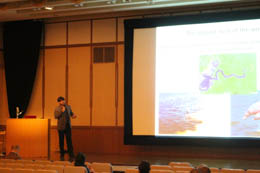
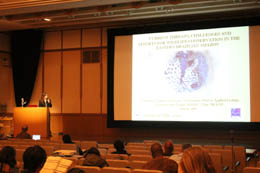
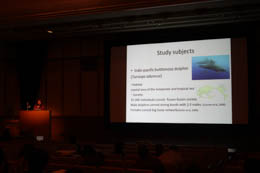


Research in Neotropical primates at the Nacional Primate Center, Brazil
Frederico Ozanan Barros MONTEIRO Universidade Federal Rural da Amazonia (UFRA)
Current threats, challenges and efforts for wildlife conservation in the Eastern Brazilian Amazon
Christina WHITEMAN Brazilian Institute of Environment and Renewable Natural Resources (IBAMA)
Pair swim analysis of Indo‐pacific bottlenose dolphin around Mikura island
Natsuko TAJIMA Wildlife Research Center, Kyoto University
Who approaches toward swimmers in wild dolphins?
Kasumi SAKAKIBARA Wildlife Research Center, Kyoto University
Report of Tanzania field tour - Nursing strategy of giraffe -
Miho SAITO Wildlife Research Center, Kyoto University
Chair: Andrew MACINTOSH
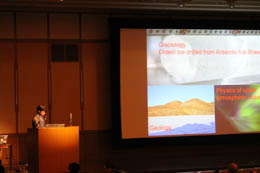



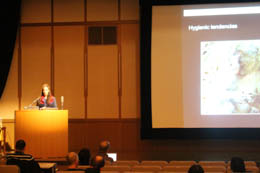
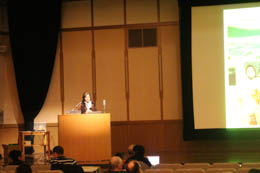
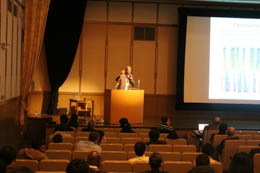
Bio‐Logging: studying wildlife in the ocean from an ‘animal's‐eye’ view
Akinori TAKAHASHI National Institute of Polar Research
Show Abstract
Human and Tibetan Macaque (Macaca thibetana) Interactions in the Valley of the Wild Monkeys, Huangshan, China
Lori SHEERAN Department of Anthropology and Director of the Primate Behavior and Ecology Program, Central Washington University
Show Abstract
Molecular Approaches for Wildlife Conservation and Ecology: Amphibians and Primates Unite
Steve WAGNER Department of Biological Sciences, Central Washington University
Show Abstract
Parasite sharing in sympatric Bornean primates
Liesbeth FRÍAS Primate Research Institute, Kyoto University
Testing Infection‐risk Avoidance in Primates
Cécile SARABIAN Primate Research Institute, Kyoto University
Farming the forest edge: local perception about primate conflict in six high altitude villages in the Garhwal Himalayas, Uttarakhand India
Himani NAUTIYAL National Institute of Advanced Studies
The evolutionary ecology of tusks in elephants
Raman SUKUMAR Centre for Ecological Sciences, Indian Institute of Science
Show Abstract

"What I hope to the future of the fieldwork and PWS endeavor"

Chair: Takushi KISHIDA



Hair structures of leopard’s prey species in Mahale
Nobuko NAKAZAWA Wildlife Research Center, Kyoto University
Allomothering in wild chimpanzees of the Mahale Mountains National Park
Hiroko SAKURAGI Wildlife Research Center, Kyoto University
The Vocal Repertoire of Tibetan Macaques: A Quantitative Analysis and a Congeneric Comparison
Sofi BERNSTEIN Primate Research Institute, Kyoto University
Factors regulating steroid hormones in Japanese macaques and orangutans
Sayuri TAKESHITA Primate Research Institute, Kyoto University
New Horizen for Comparative Cognitive Science :From Single‐celled organisms to Humans
第44回ホミニゼーション研究会「比較認知科学の展望:粘菌からヒトまで」

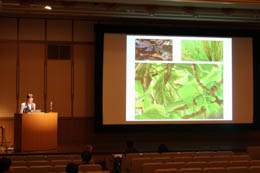
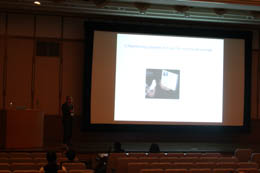

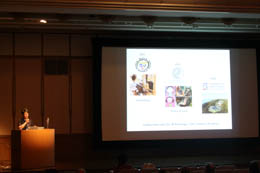
Physical ethology of single‐celled organism
Toshiyuki NAKAGAKI Hokkaido University
Show Abstract
Domestication and song evolution in Bengalese finches
Kazuo OKANOYA The University of Tokyo
Great apes make anticipatory looks based on false beliefs
Fumihiro KANO Wildlife Research Center, Kyoto University
Evolutionarily predisposed snake fear: Comparative, Developmental, and Electrophysiological studies
Nobuyuki KAWAI Nagoya University
Comparative analysis of reinforcing property ‐Study on pleasure‐
Shigeru WATANABE Keio Unversity
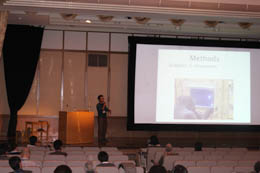
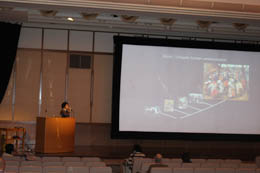
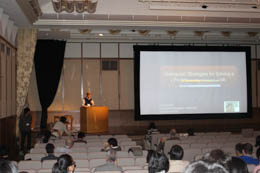
Cross‐modal correspondences in non‐human primates
Ikuma ADACHI Primate Research Institute, Kyoto University
Rhythmic entrainment : Evolutionary origins of human bonding mechanism
Yuko HATTORI Wildlife Research Center, Kyoto University
Orangutan Strategies for Solving a Visuospatial Memory Task
Chris MARTIN Indianapolis Zoo
Show Abstract
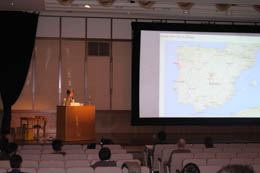
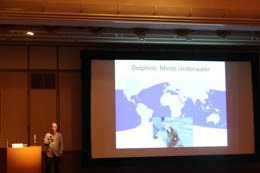
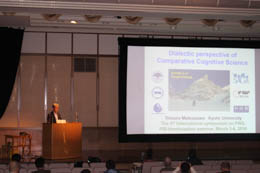
Launch of a new project to study wild horses in Portugal
Satoshi HIRATA Wildlife Research Center, Kyoto University
Exploring the perceptual world from the comparative‐cognitive perspective
Masaki TOMONAGA Primate Research Institute, Kyoto University
Dialectical perspective of Comparative Cognitive Science
Tetsuro MATSUZAWA Primate Research Institute, Kyoto University
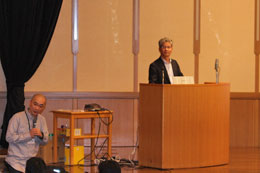


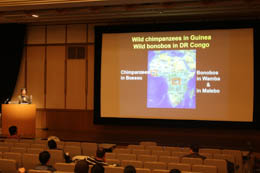
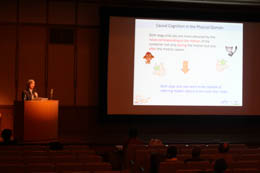
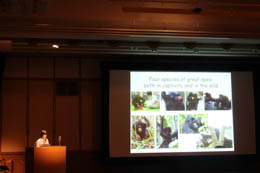
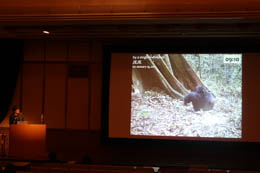
Talk on cats and dogs: Comparative cognition in two of our best friends
Kazuo FUJITA Graduate School of Letters, Kyoto University
Comparative studies with chimpanzees and bonobos on cooperation in the wild and captivities
Shinya YAMAMOTO Kobe University
Conservation of wild chimpanzees at Bossou, Guinea
Naruki MORIMURA Wildlife Research Center, Kyoto University
Cognitive development and mother‐infant interaction in great apes
Misato HAYASHI Primate Research Institute, Kyoto University
Modern Environmental Challenges to the Ecological Flexibility of Great Apes
Crickette SANZ Washington University
Show Abstract
Poster Award
Chair: Takashi HAYAKAWA
Oral Presentation
1st Prize: Sayuri TAKESHITA
2nd Prize: Liesbeth Frias / Kazuya TODA
Poster Presentation
1st Prize: Lucie RIGAILL
2nd Prize: Renata MENDONCA
3rd Prize: Yuri KAWAGUCHI / Himani NAUTIYAL / Hiroya TAKIYAMA / Claire WATSON
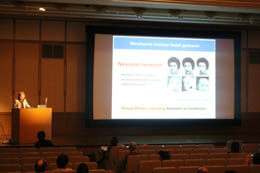

Emergence of Self :Development of Social Cognition from Perinatal
Masako MYOWA‐YAMAKOSHI Graduate School of Education, Kyoto University
Can we study emotions in animals?
Ralph ADOLPHS California Institute of Technology
Show Abstract
Tetsuro MATSUZAWA (PWS Program Coordinator)
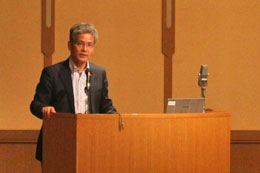

Registration
If you want to join the symposium, please send the following
information to pws_sympo2016 < at > wildlife-science.org.
(1) Full name
(2) Affiliation
(3) Position
(4) Email address
(5) Date you will attend: March 3 rd- March 6th (change as needed)
The deadline is February 10th.
Call for Poster presentation
If you want to give poster presentation,please send the following
information to pws_sympo2016 < at > wildlife-science.org.
(1) Full name
(2) Affiliation
(3) Position
(4) Email address
(5) Date you will attend: March 3 rd- March 6th (change as needed)
(6) Presentation title (in English)
The deadline is February 10th.

Physical ethology of single-celled organism
Show Abstract
Orangutan Strategies for Solving a Visuospatial Memory Task
Show Abstract
Professor in Geography Federal University of Amazonas
Center for Cities Study and Research in the Amazon -NEPECAB
Monkey for dinner? Bushmeat, urbanization and food security in the Amazon.
Show Abstract
Laboratório de Fisiologia Comportamental e Evolução (LFCE), Instituto Nacional de Pesquisas da Amazônia (INPA)
Electric fish as a model organism for behavioral research (and public exhibition).
Show Abstract
Centre for Ecological Sciences, Indian Institute of Science, Bangalore 560012, India
The evolutionary ecology of tusks in elephants
Show Abstract
National Institute of Polar Research
Bio-Logging: studying wildlife in the ocean from an ‘animal’s-eye’ view.
Show Abstract
Professor of Biological Sciences and Primate Behavior
Department of Biological Sciences
Central Washington University
Molecular Approaches for Wildlife Conservation and Ecology: Amphibians and Primates Unite.
Show Abstract
Washington University in St. Louis
Modern Environmental Challenges to the Ecological Flexibility of Great Apes
Show Abstract
Professor, Dept. of Anthropology and McGill School of Environment, McGill University
CV / Google Scholar Citation
Primate Conservation: What we know, what we do not know, and ways forward
Show Abstract

Department of Anthropology and Museum Studies and Primate Behavior and Ecology Program, Central Washington University
Human and Tibetan Macaque (Macaca thibetana) Interactions in the Valley of the Wild Monkeys, Huangshan, China
Show Abstract
Instituto Nacional de Pesquisas da Amazônia
Diversification in white--sand vegetation in tropical south america ? the case of the plant genus Pagamea (Rubiaceae)
Show Abstract

Download Map (PDF)
INUYAMA INTERNATIONAL SIGHTSEEING CENTER (FREUDE)
Address: 4-21, Matsumoto-cho, Inuyama-shi, Aichi
5-minute walk from Inuyama Station on the Meitetsu Inuyama Line.
From Meitetsu-Nagoya Station
About 25 minutes by the Rapid Limited Express (Kaisoku Tokkyu) or Limited Express (Tokkyu).
From Central Japan International Airport Station
About 55 minutes by μSKY Limited Express (Myu Sukai)
Map and Transportation Guide
@ INUYAMA Tourists Information Center Website
日本人:3日83人、4日93人、5日102人、6日96人の延べ374人
合計:3日130人、4日140人、5日148人、6日142人の延べ560人

 PROGRAM (2.7MB / Last Update March 8th)
PROGRAM (2.7MB / Last Update March 8th)
